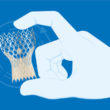Many studies have shown there is higher mortality and complications among women after acute myocardial infarction (AMI) vs. men, especially after 30 days. Even though the mechanism driving higher mortality remains uncertain, recent studies have seen differences in thrombus formation with increased platelet count among women. In STEMI patients, intracoronary thrombus burden is a predictor...
Stent Thrombosis: Clinical Characteristics and Event Predictors in a Contemporary Cohort
Stent thrombosis (ST) is a serious complication of coronary PCI. However, its incidence across registries is low. It has been classified according to onset into acute (less than 24 hrs.), subacute (between 24 and 30 days), late (between 30 and 365 days) and very late (later than 365 days). The estimated incidence of ST is...
Survey Stent-Save a Life! (SSL) / SOLACI | Procedural variation in the performance of Primary PCI
These last decades, primary percutaneous coronary intervention (PCI) has improved STEMI patient prognosis. However, its penetration varies across to regions and countries. As part of the initiative Stent-Save a Life! (SSL), SOLACI is publishing this electronic survey to assess the use of primary PCI throughout different countries based on the assumption that there is significant...
SURTAVI at 5 Years
Transcatheter aortic valve replacement (TAVR) by transfemoral access has shown great benefit for different risk groups, but its long-term durability is still uncertain. Available evidence comes from small analysis and a single randomized trial with 280 patients and an 8 year follow-up: the NOTION Trial, where TAVR showed less valvular degeneration than aortic valve replacement (AVR) surgery....
Use of OCT FFR on ACS Clinical Outcomes
Patients undergoing acute coronary syndrome (ACS) benefit from percutaneous coronary intervention (PCI). At present, there is no question about this. However, residual ischemia after PCI is associated with a worse prognosis. Angiography studies and intravascular imaging are useful to assess post intervention outcomes, but they are limited when it comes to the physiological assessment of...
TCT 2022 | PCSK9 Inhibitor in Patients with STEMI to Lower LDL Cholesterol
In patients with ST-elevation myocardial infarction (STEMI), early treatment with statins —regardless of low-density lipoprotein (LDL) cholesterol levels — is routine around the world. Adding a potent LDL lowering agent, as a PCSK9 inhibitor, has proven clinical benefits in patients with a history of acute coronary syndrome or atherosclerosis, since treatment with statins have not...
TCT 2022 | Angioplasty vs. Surgery: The BEST Study Long-Term Results
The BEST study was a prospective, randomized study to compare percutaneous coronary intervention (PCI) with everolimus-eluting stents vs. myocardial revascularization surgery (MRS) in patients with multivessel disease. The analysis was interrupted early due to slow patient inclusion. The study included 880 patients, who were randomized 438 to the PCI arm and 442 to the MRS arm....
TCT 2022 | FAME-3 Trial: post PCI FFR And IVUS in Patients with Three-Vessel Disease
We are well aware of the benefits of Fractional Flow Reserve (FFR) to assess coronary artery stenosis. FFR after PCI (post-PCI FFR) has been shown to have prognostic value; however, few studies have included patients with complex three-vessel disease. The impact of intravascular ultrasound (IVUS) or optical computer tomography (OCT) in this field has been...
Primary vs Secondary Retrograde Approach in CTO: Differences
Successful chronic total occlusion procedures are on the rise, especially in high volume centers, seeing as they count on more sophisticated materials and different techniques, such the retrograde approach. However, the significant increase of success rate with this technique has also brought along an increase in associated complications. The aim of this study was to...
Mortality and Bleeding in Access Site Choice: Systematic Review
In 1992, Kiemeneij performed the first transradial coronary procedure, following Campeau’s description of that access in 1989. It’s been 30 years since that milestone in interventional cardiology. Over time, the number of procedures conducted with this approach has increased exponentially, and it is the main approach in most centers in different clinical scenarios. Historically, the...







